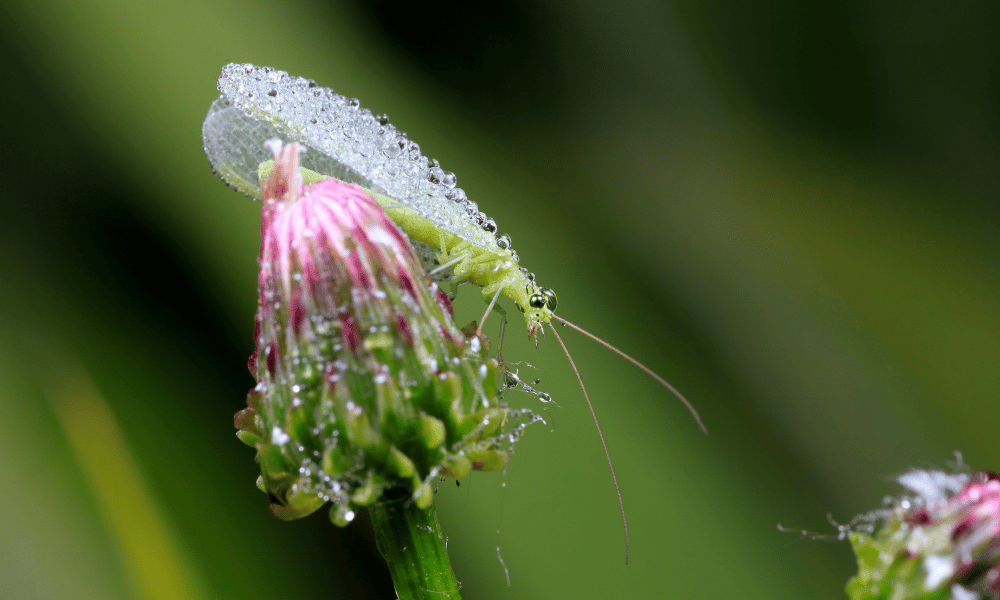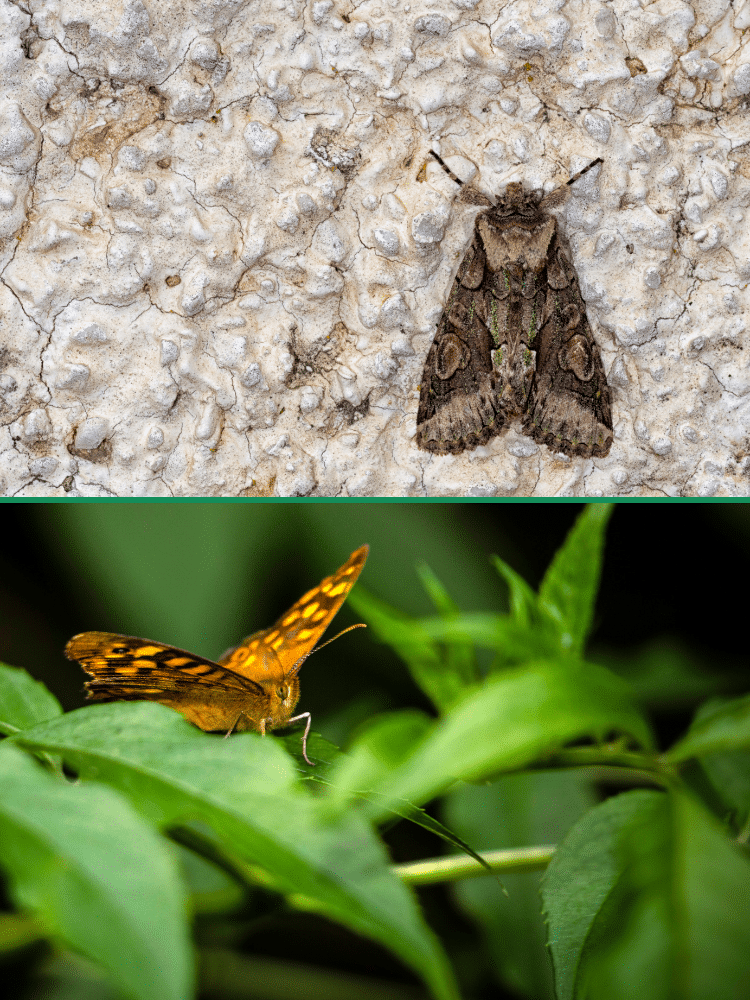Lacewing refers to insects that have transparent, veined wings. There are several different varieties, and they don’t all eat the same food. The most common of these is the bright green one, followed closely by the brown ones. But, what do all lacewings eat?
Lacewings eat different wings depending on which part of the lifecycle they are at. Lacewing larvae will eat a protein-rich diet of aphids and other small, soft-bodies bugs. Adult lacewings consume nectar and pollen, instead.
Do Lacewings Eat Pests?
The larvae are also known as aphid lions, feeding gluttonously on aphids. Collecting tiny garden debris with their hairs, such as twigs and leaves, they camouflage themselves so they can get closer to their prey.
This neat trick is also helpful against their competitors of ants in eating the aphids. The ant guards don’t recognise them, allowing the lacewing larvae to steal their supply of aphids too.

Whilst their favourite bugs are aphids, they’re not too fussy about what they will eat. Using their legs to move around, they will kill many soft-bodied bugs by piercing them with two sharp mandibles.
If you see a sticky white residue on your indoor plants, it could be mealybugs, a tasty snack for any lacewing larvae.
Leafhoppers can damage fruit and vegetable plants and even your lawn. Lacewing larvae can consume hundreds of these bugs; it’s not called the gardeners’ friend for nothing.
If your plants are infested with thrips, you can buy lacewing eggs to sprinkle in your garden or greenhouse. Not all thrips are harmful to your garden as they too eat bugs but using an insecticide will kill them all.
Instead, all you need is around 10 lacewing eggs per plant, and you will have yourself a natural thrip destroyer.
Other bugs the lacewing larvae eat are psyllids (plant lice), which are spider mites that can destroy your herbs.
Nobody likes those bothersome whiteflies that can stunt the growth of anything that produces sap. That is except for lacewing larvae, which will happily devour them for dinner.
Following the mandible stabbing, they inject the bug with an acid mixture of digestible juices. Once the prey is turned to mush, the soft body contents are then sucked out, leaving nothing but an empty shell.
They have been known to accidentally bite humans who might happen to brush on the plant they’re hunting upon. But they’re not harmful to humans as their bite is more of an annoyance than it is painful.
Do Lacewings Eat Plants?
While the lacewing larvae hunt for soft-bodied bugs but when it grows wings, their diet changes altogether. Adult lacewings live on nectar and pollen and become nocturnal to avoid predators.
They favour flowering plants such as alyssum, daisies, fennel, clover, and even the common dandelion. An adult lacewing that feeds this way will not harm any plants as it does not eat the leaves or petals.
If you wish to encourage lacewings into your garden to lay those beneficial larvae eggs, the adults are attracted to rich nectar types of plants.

Try building log piles, or grow thick hedges so they might be tempted to overwinter there. Don’t worry, they will not harm any plants in a garden when their eggs hatch.
If anything, it is good to get ahead of the game by having lacewing hatch naturally in your garden. That way, you may be ready in advance of destroying the more annoying bugs.
Lacewings Do Not Eat Plants
When matured, lacewings consume nectar and pollen. They do not consume any other parts of your plants, so will not harm them in any way.
Do Lacewings Eat Anything Else?
When the lacewing first emerges from its egg, the first thing it will do is eat its eggshell. For the green lacewing, if the eggs were to be laid in a nest, the hatching larvae would go on to eat their siblings too.
That’s why the green lacewing mother will lay each egg on a string of silk under a leaf to prevent this cannibalistic behaviour.
Needless to say, the larvae will eat any other bug eggs it happens upon, in their hunt for food. It will also eat any larvae (caterpillars) that cross its path.
Do Lacewings Get Eaten too?
As eggs, their most predominant predator is the ant because they will feast on eggs. Any predaceous insect will happily devour the lacewing eggs.
Other predators that enjoy a lacewing meal are bats and birds. But they’re not entirely helpless against these predators.
The green lacewing adult female attempts to protect herself from predators by emitting a nasty smell. For this reason, they are also known as the stink fly (not the same as a stinkbug!)
The adult lacewing has excellent hearing and can detect the ultrasonic signal of a bat. If this happens mid-flight, it will close its wings and drop to the floor in an attempt to avoid being the bat’s lunch.
That’s a neat little trick that at least helps to ensure it gets to lay its eggs before it dies a natural death.
Summary
Lacewings eat different things depending on the stage of their life they are at. Aphid larvae will consume as many soft-bodied insects as possible – often aphids. Adults, however, will only consume pollen and nectar.
No form of lacewing will leat the leaves or flowers of your plants and will not cause harm to them.







